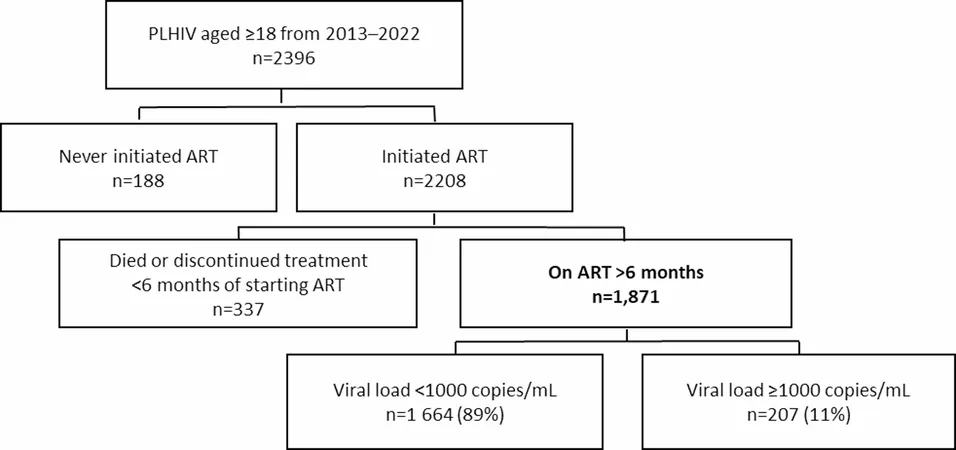
Major Findings on HIV Viral Load Challenges in Tajikistan: What You Need to Know
2025-07-07
Author: Siti
HIV Viral Load Suppression: A Global Challenge
In the fight against HIV, achieving viral load suppression is crucial to reducing transmission rates. The ambitious global targets aim for 95% of individuals with HIV to be diagnosed, receiving antiretroviral therapy (ART), and virally suppressed. A new study focuses on the Sughd region of Tajikistan, highlighting non-suppression rates and the factors contributing to this pressing issue.
Study Overview: Understanding the Numbers
Researchers conducted a retrospective cohort study analyzing data from adults (18+) diagnosed with HIV between 2013 and 2022 who had been on ART for at least six months. Data collection spanned national electronic surveillance systems and medical records, revealing that 11% of the 1,871 subjects had unsuppressed viral loads—defined as having 1,000 copies/mL or more.
Who is Affected Most?
The findings indicate that the majority of participants were male (57%), with a median age of 31 years. Notably, 38% of these individuals were migrants, and 73% were married. A staggering 32% entered the study with advanced HIV disease, significantly heightening their risk of non-suppression.
Key Risk Factors Uncovered
Analysis revealed alarming trends: male migrants and unmarried individuals were more likely to experience viral load non-suppression. Furthermore, those who began treatment before 2019 or were not on dolutegravir (DTG) regimens faced higher risks as well. Strikingly, 43% of those not on DTG had unsuppressed viral loads, compared to just 23% of those diagnosed late.
The Challenges of Migration
The study shines a light on the complexities faced by migrant populations. Economic pressures force many Tajiks to seek work abroad, leading to disrupted access to consistent healthcare and treatment. As a result, migrants are uniquely vulnerable to untreated HIV, necessitating urgent calls for tailored support and intervention strategies.
Urgent Need for Improved Strategies
Current viral load suppression rates fall significantly short of the global target, with only 62% of the estimated 15,000 people living with HIV in Tajikistan being virally suppressed. The results emphasize the dire need for enhanced support systems for late-diagnosed individuals and continuous treatment for high-risk groups like men and migrants.
Conclusion: A Call to Action
As the battle against HIV continues, addressing the barriers to viral load suppression in the Sughd region becomes increasingly urgent. There is a pressing need for strategic interventions focused on improving early diagnosis and ensuring consistent access to ART, especially for at-risk populations. In light of these findings, local health authorities are called to act swiftly to close the gap in treatment and achieve a significant reduction in HIV transmission.





 Brasil (PT)
Brasil (PT)
 Canada (EN)
Canada (EN)
 Chile (ES)
Chile (ES)
 Česko (CS)
Česko (CS)
 대한민국 (KO)
대한민국 (KO)
 España (ES)
España (ES)
 France (FR)
France (FR)
 Hong Kong (EN)
Hong Kong (EN)
 Italia (IT)
Italia (IT)
 日本 (JA)
日本 (JA)
 Magyarország (HU)
Magyarország (HU)
 Norge (NO)
Norge (NO)
 Polska (PL)
Polska (PL)
 Schweiz (DE)
Schweiz (DE)
 Singapore (EN)
Singapore (EN)
 Sverige (SV)
Sverige (SV)
 Suomi (FI)
Suomi (FI)
 Türkiye (TR)
Türkiye (TR)
 الإمارات العربية المتحدة (AR)
الإمارات العربية المتحدة (AR)